Abstract
The relative efficiency of the metered dose inhaler (MDI), the MDI attached to a pear shaped extension tube (PET), and the Inspiron Mini-Neb nebuliser were assessed in eight normal and eight asthmatic subjects. Subjects inhaled the same increasing doses of terbutaline with each technique on different occasions and the response was measured as specific airway conductance (sGaw) and, in the asthmatic patients only, as FEV1. The PET produced greater bronchodilatation than either the MDI or the nebuliser in both normal and asthmatic subjects. Serum terbutaline concentrations were similar after the PET and MDI in the normal subjects, but were lower with the PET in the asthmatic patients. The nebuliser produced about the same amount of bronchodilatation as the MDI--slightly less in the normal subjects and slightly more when assessed as FEV1 in the asthmatic subjects. Serum terbutaline concentrations were lower after the nebuliser than after the MDI in both groups of subjects. For patients with moderately severe airways obstruction requiring large doses of beta agonist, the nebuliser will produce an amount of bronchodilatation similar to the MDI with lower blood levels. Overall, the PET produced greater bronchodilatation than either of the other two methods of inhalation, with low serum terbutaline concentrations similar to those produced by the nebuliser in the asthmatic patients.
Full text
PDF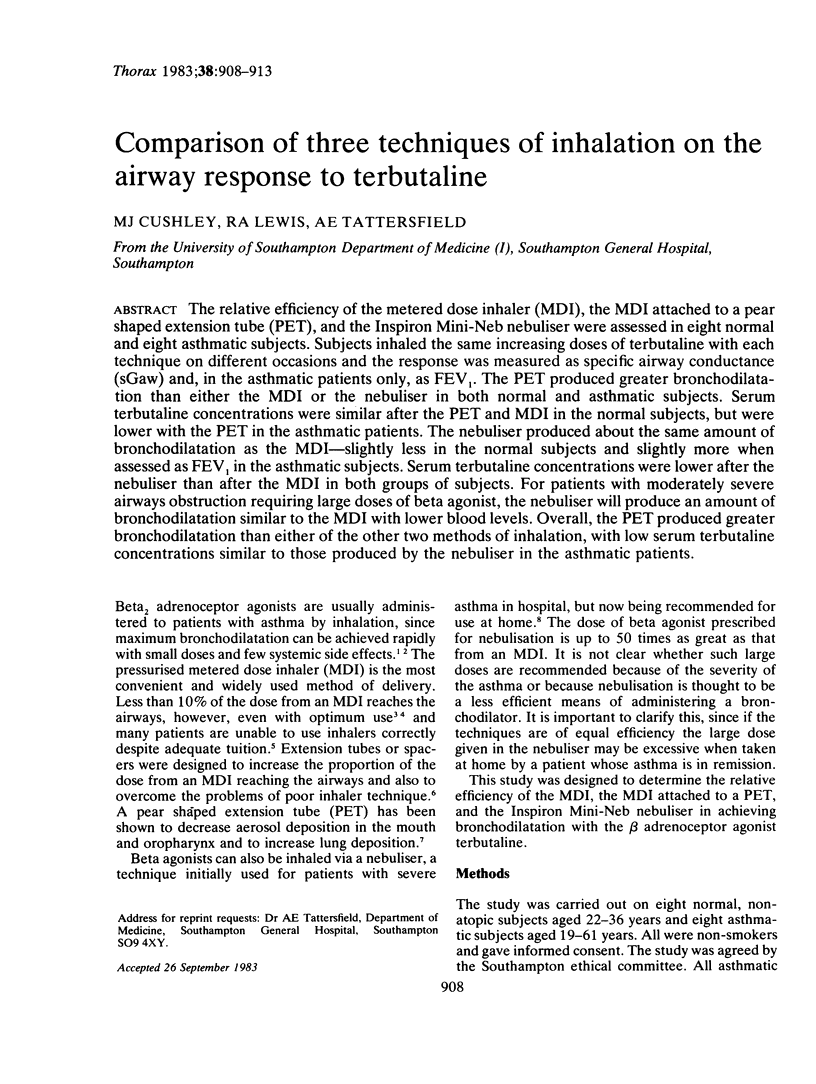
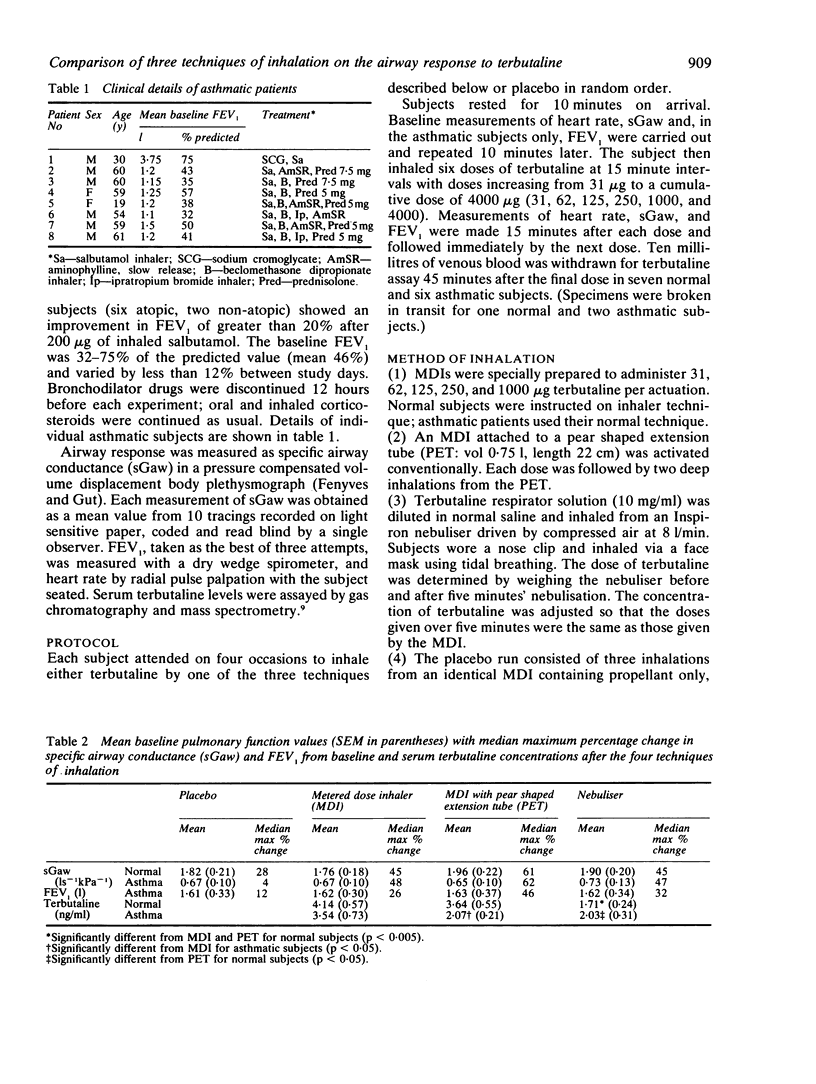
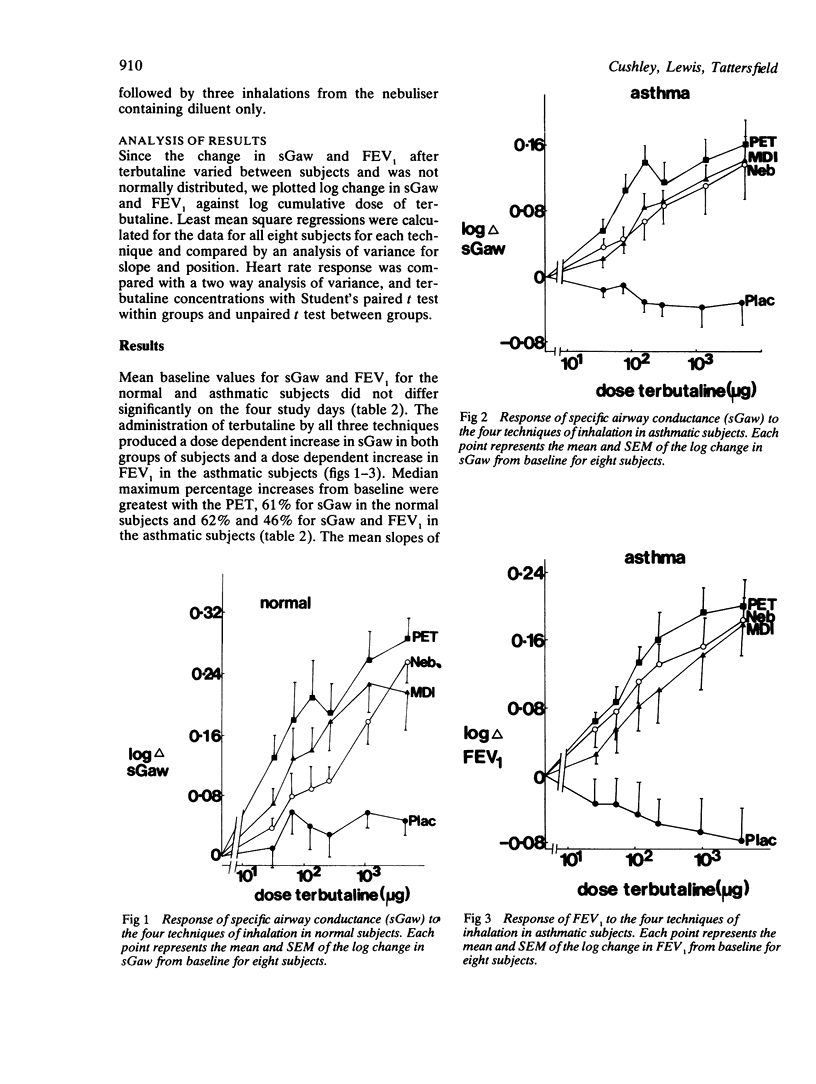
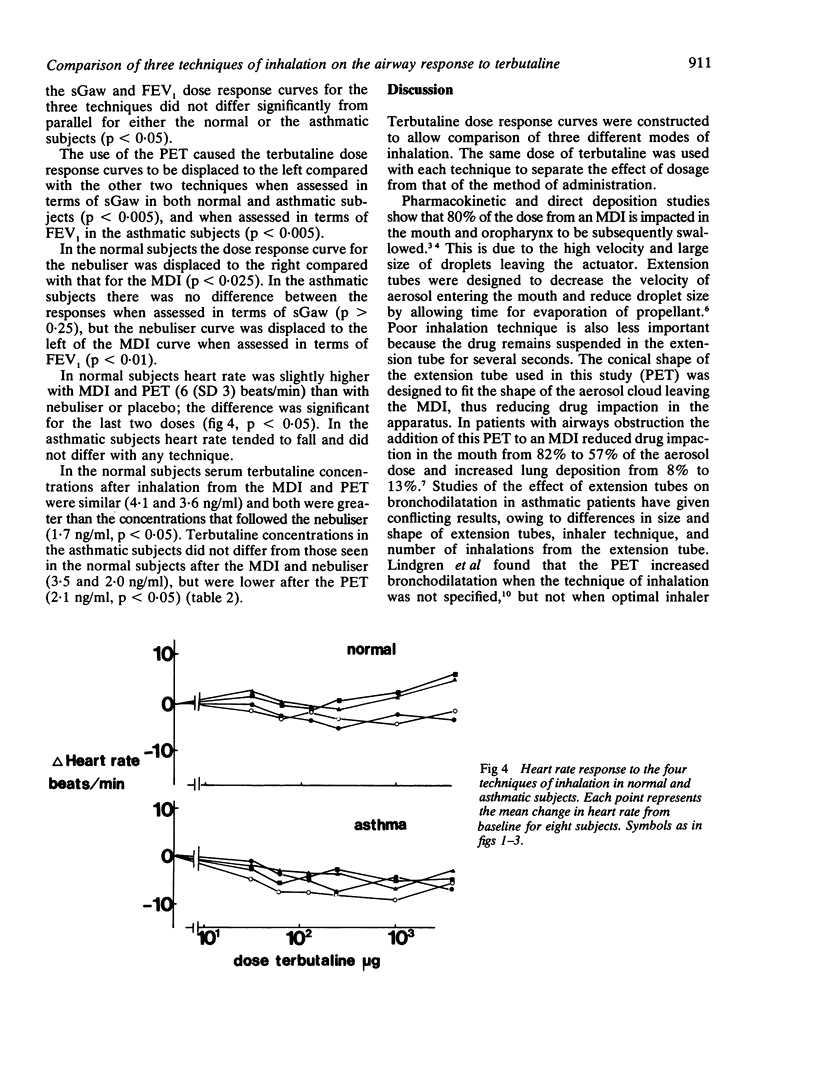
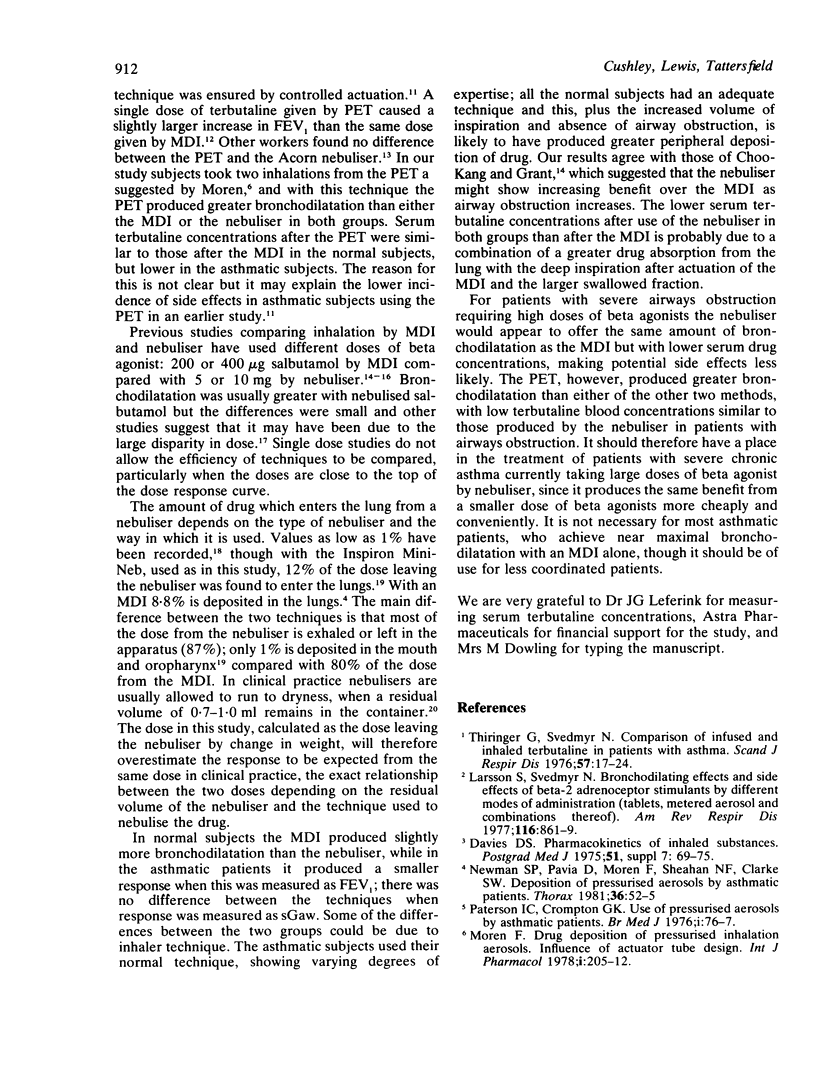
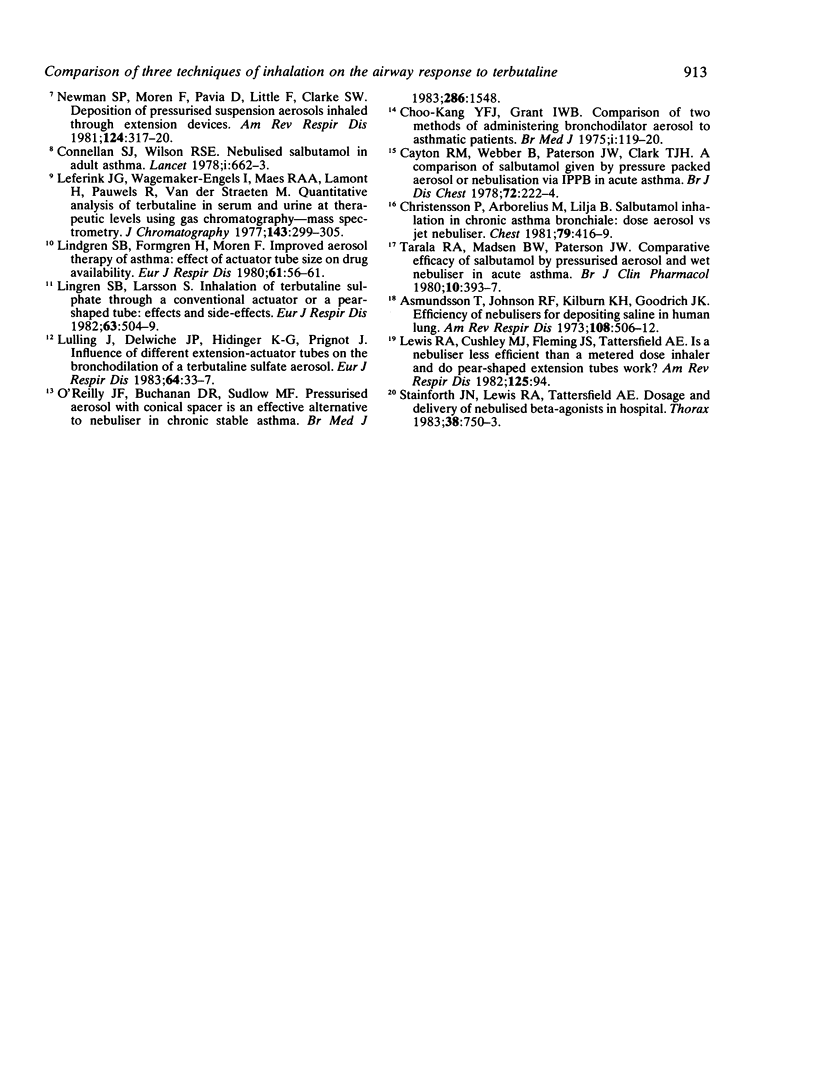
Selected References
These references are in PubMed. This may not be the complete list of references from this article.
- Asmundsson T., Johnson R. F., Kilburn K. H., Goodrich J. K. Efficiency of nebulizers for depositing saline in human lung. Am Rev Respir Dis. 1973 Sep;108(3):506–512. doi: 10.1164/arrd.1973.108.3.506. [DOI] [PubMed] [Google Scholar]
- Cayton R. M., Webber B., Paterson J. W., Clark T. J. A comparison of salbutamol given by pressure-packed aerosol or nebulization via IPPB in acute asthma. Br J Dis Chest. 1978 Jul;72(3):222–224. doi: 10.1016/0007-0971(78)90045-1. [DOI] [PubMed] [Google Scholar]
- Choo-Kang Y. F., Grant I. W. Comparison of two methods of administering bronchodilator aerosol to asthmatic patients. Br Med J. 1975 Apr 19;2(5963):119–120. doi: 10.1136/bmj.2.5963.119. [DOI] [PMC free article] [PubMed] [Google Scholar]
- Christensson P., Arborelius M., Jr, Lilja B. Salbutamol inhalation in chronic asthma bronchiale: dose aerosol vs jet nebulizer. Chest. 1981 Apr;79(4):416–419. doi: 10.1378/chest.79.4.416. [DOI] [PubMed] [Google Scholar]
- Connellan S. J., Wilson R. S. Nebulised salbutamol in adult asthma. Lancet. 1978 Mar 25;1(8065):662–663. doi: 10.1016/s0140-6736(78)91169-8. [DOI] [PubMed] [Google Scholar]
- Davies D. S. Pharmacokinetics of inhaled substances. Postgrad Med J. 1975;51(7 Suppl):69–75. [PubMed] [Google Scholar]
- Larsson S., Svedmyr N. Bronchodilating effect and side effects of beta2- adrenoceptor stimulants by different modes of administration (tablets, metered aerosol, and combinations thereof). A study with salbutamol in asthmatics. Am Rev Respir Dis. 1977 Nov;116(5):861–869. doi: 10.1164/arrd.1977.116.5.861. [DOI] [PubMed] [Google Scholar]
- Leferink J. G., Wagemaker-Engels I., Maes R. A. Quantitative analysis of terbutaline in serum and urine at therapeutic levels using gas chromatography--mass spectrometry. J Chromatogr. 1977 May 1;143(3):299–305. doi: 10.1016/s0378-4347(00)81810-1. [DOI] [PubMed] [Google Scholar]
- Lindgren S. B., Larsson S. Inhalation of terbutaline sulphate through a conventional actuator or a pear-shaped tube: effects and side effects. Eur J Respir Dis. 1982 Nov;63(6):504–509. [PubMed] [Google Scholar]
- Lulling J., Delwiche J. P., Hidinger K. G., Prignot J. Influence of different extension-actuator tubes on the bronchodilation effect of a terbutaline sulfate aerosol. Eur J Respir Dis. 1983 Jan;64(1):33–37. [PubMed] [Google Scholar]
- Newman S. P., Morén F., Pavia D., Little F., Clarke S. W. Deposition of pressurized suspension aerosols inhaled through extension devices. Am Rev Respir Dis. 1981 Sep;124(3):317–320. doi: 10.1164/arrd.1981.124.3.317. [DOI] [PubMed] [Google Scholar]
- Newman S. P., Pavia D., Morén F., Sheahan N. F., Clarke S. W. Deposition of pressurised aerosols in the human respiratory tract. Thorax. 1981 Jan;36(1):52–55. doi: 10.1136/thx.36.1.52. [DOI] [PMC free article] [PubMed] [Google Scholar]
- O'Reilly J. F., Buchanan D. R., Sudlow M. F. Pressurised aerosol with conical spacer is an effective alternative to nebuliser in chronic stable asthma. Br Med J (Clin Res Ed) 1983 May 14;286(6377):1548–1548. doi: 10.1136/bmj.286.6377.1548. [DOI] [PMC free article] [PubMed] [Google Scholar]
- Paterson I. C., Crompton G. K. Use of pressurised aerosols by asthmatic patients. Br Med J. 1976 Jan 10;1(6001):76–77. doi: 10.1136/bmj.1.6001.76-a. [DOI] [PMC free article] [PubMed] [Google Scholar]
- Stead W. W., Dutt A. K. Chemotherapy for tuberculosis today. Am Rev Respir Dis. 1982 Mar;125(3 Pt 2):94–101. doi: 10.1164/arrd.1982.125.3P2.94. [DOI] [PubMed] [Google Scholar]
- Tarala R. A., Madsen B. W., Paterson J. W. Comparative efficacy of salbutamol by pressurized aerosol and wet nebulizer in acute asthma. Br J Clin Pharmacol. 1980 Oct;10(4):393–397. doi: 10.1111/j.1365-2125.1980.tb01776.x. [DOI] [PMC free article] [PubMed] [Google Scholar]
- Thiringer G., Svedmyr N. Comparison of infused and inhaled terbutaline in patients with asthma. Scand J Respir Dis. 1976;57(1):17–24. [PubMed] [Google Scholar]


